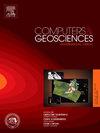Siamese地形生成模型:一种深度学习模型,用于生成具有精细细节的南极冰下地形
IF 4.4
2区 地球科学
Q1 COMPUTER SCIENCE, INTERDISCIPLINARY APPLICATIONS
引用次数: 0
摘要
近年来,在南极洲不断积累的无线电回波探测(RES)测量结果大大扩展了我们对冰下结构的认识。有效利用res收集的数据构建准确的南极冰下地形已成为当代极地研究的重要组成部分。各种方法,包括传统的插值、反演技术,甚至深度学习方法,已经被用来重建南极床的地形。然而,这些床层地形经常受到过度平滑、小尺度特征丢失、精度低和不稳定等问题的困扰。本文提出了暹罗地形生成模型(STGM)来解决上述问题。该模型在ArcticDEM上训练后,融合了基于深度学习的生成模型、Siamese网络、核预测和可变形卷积的优点,能够稳定、准确地生成南极冰下地形。在评估方面,与当前南极冰下数字高程模型的定量和定性比较表明,我们的方法可以以高精度和最小的人工制品生成地形特征,如山脉、冰流和山谷。在定量验证中,与之前表现最好的方法(GEI)相比,我们的模型在平均绝对误差(MAE)和均方根误差(RMSE)方面都提高了20%以上,在准确性和细节方面超过了现有模型。此外,还针对不同轨道间距对模型误差的影响进行了误差分析,为进一步研究轨道密度对模型误差的影响提供了基准。最后,利用基于RES数据的STGM,成功生成了伊丽莎白公主地的冰下地形。在该地区,500 m分辨率的STGM生成的地形清晰地描绘了冰下湖泊和山谷,揭示了冰下地形的复杂性和多样性。本文章由计算机程序翻译,如有差异,请以英文原文为准。
Siamese topographic generation model: A deep learning model for generating Antarctic subglacial topography with fine details
The ongoing accumulation of radio-echo sounding (RES) measurements in Antarctica in recent years has significantly expanded our understanding of subglacial structures. The effective use of RES-collected data to construct accurate Antarctic subglacial topography has emerged as a vital component of contemporary polar research. Various methods, including conventional interpolation, inversion techniques, and even deep learning methods, have been used to recreate Antarctic bed topography. However, these bed topographies are often plagued by over-smoothing, loss of small-scale features, low precision, and instability.
The Siamese topographic generation model (STGM) is proposed here to address the above mentioned issues. After being trained on ArcticDEM, this model can generate Antarctic subglacial topography with stability and accuracy by merging the advantages of deep learning-based generative models, Siamese networks, kernel prediction, and deformable convolutions. In terms of evaluation, both quantitative and qualitative comparisons with current Antarctic subglacial digital elevation models demonstrate that our method can generate topographical features, such as mountains, ice streams, and valleys, with high precision and minimal artifacts. In quantitative validation, our model achieves over 20% improvement in both Mean Absolute Error (MAE) and Root Mean Square Error (RMSE) compared to the previously best-performing method (GEI), surpassing existing models in terms of accuracy and detail.
Moreover, an error analysis specifically focusing on the effect of varying track intervals has been conducted, offering a benchmark for future investigations into the influence of track density on model errors. Finally, using STGM based on the RES data, the subglacial topography of Princess Elizabeth Land has also been successfully generated. In this area, the topography generated by STGM at a resolution of 500 m clearly depicts subglacial lakes and valleys, revealing the complexity and diversity of the subglacial topography.
求助全文
通过发布文献求助,成功后即可免费获取论文全文。
去求助
来源期刊

Computers & Geosciences
地学-地球科学综合
CiteScore
9.30
自引率
6.80%
发文量
164
审稿时长
3.4 months
期刊介绍:
Computers & Geosciences publishes high impact, original research at the interface between Computer Sciences and Geosciences. Publications should apply modern computer science paradigms, whether computational or informatics-based, to address problems in the geosciences.
 求助内容:
求助内容: 应助结果提醒方式:
应助结果提醒方式:


